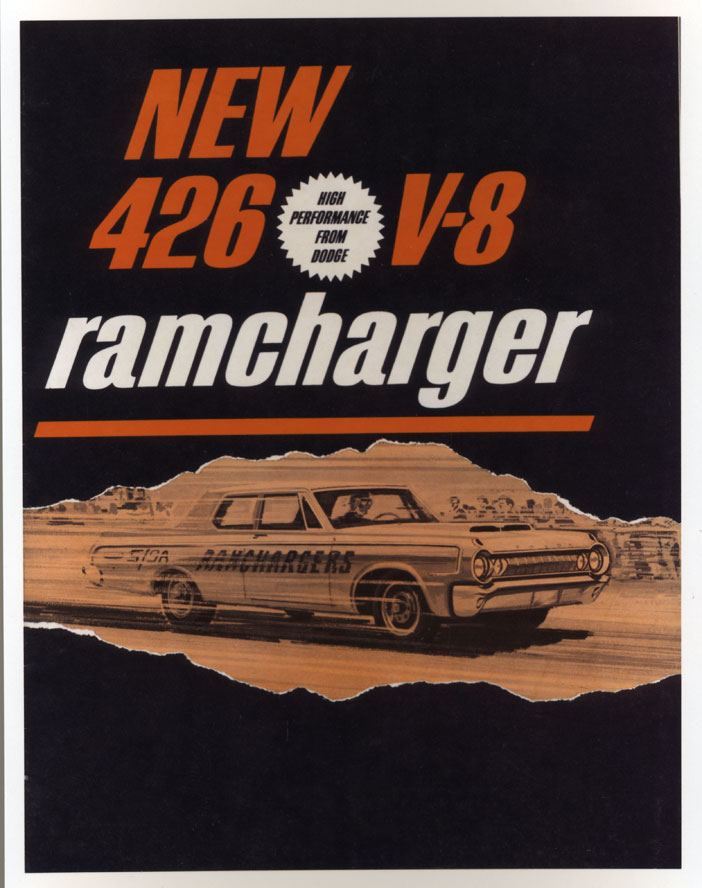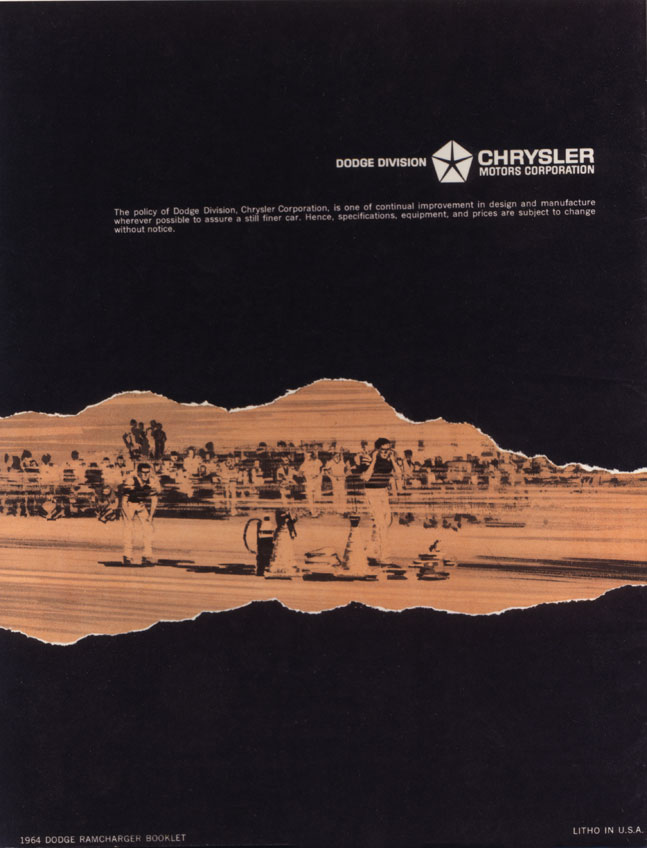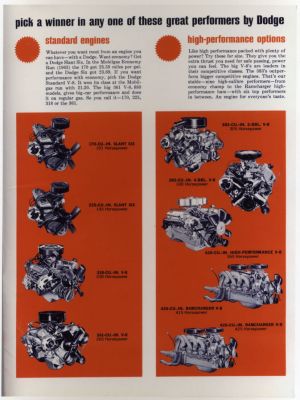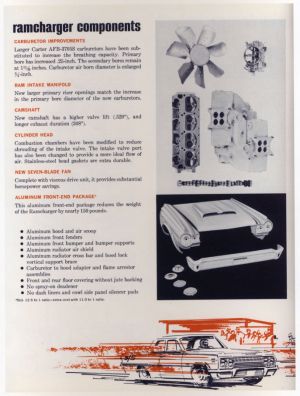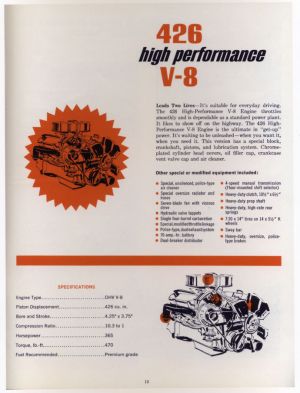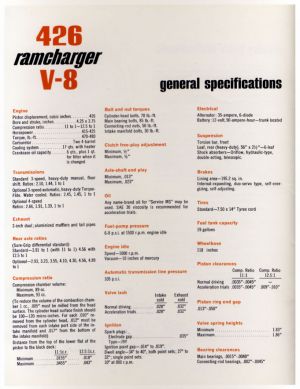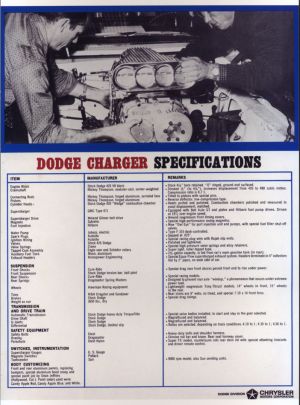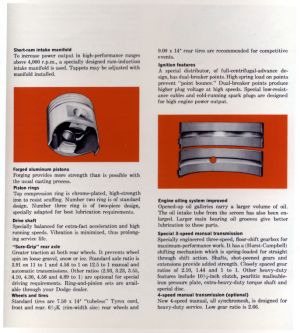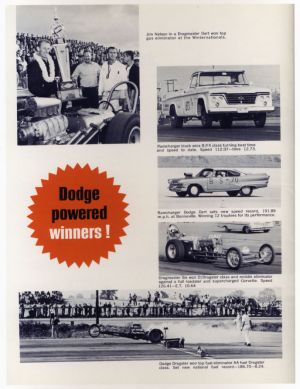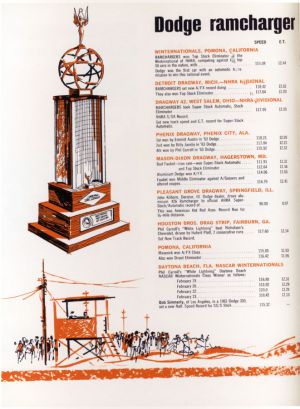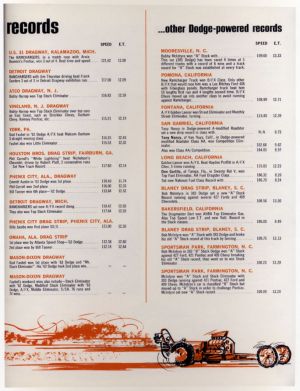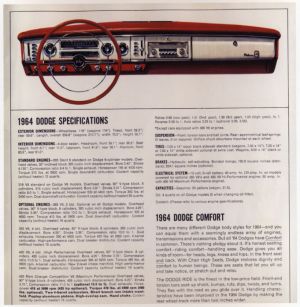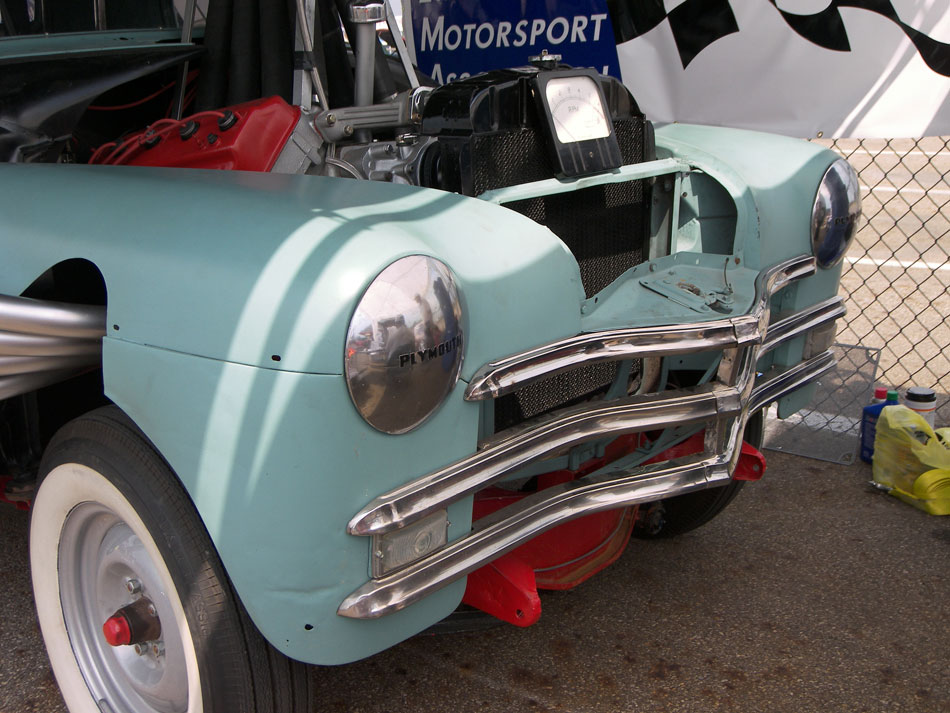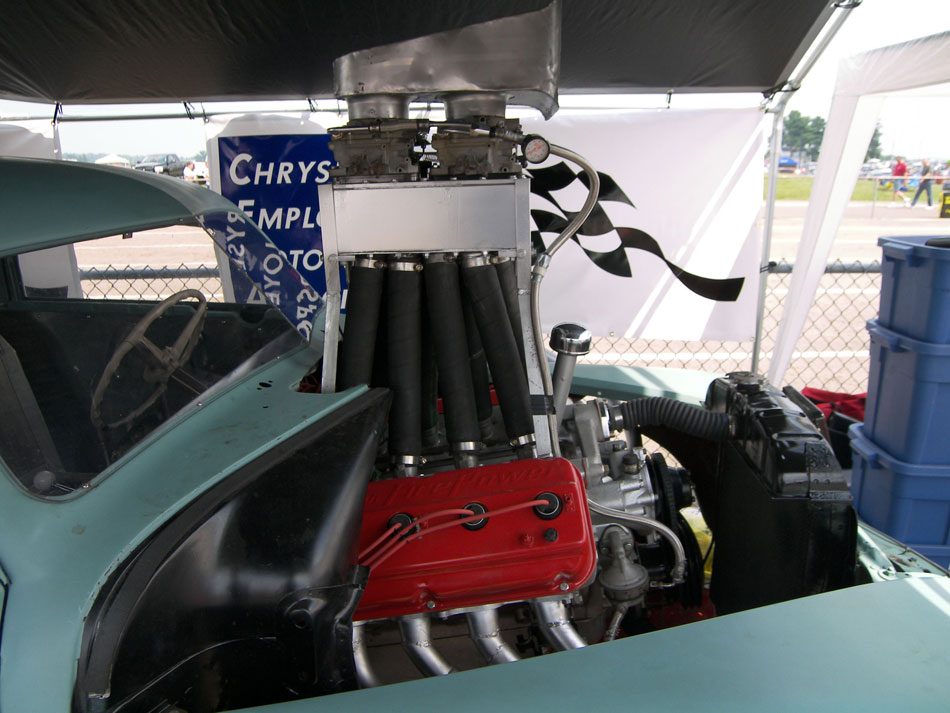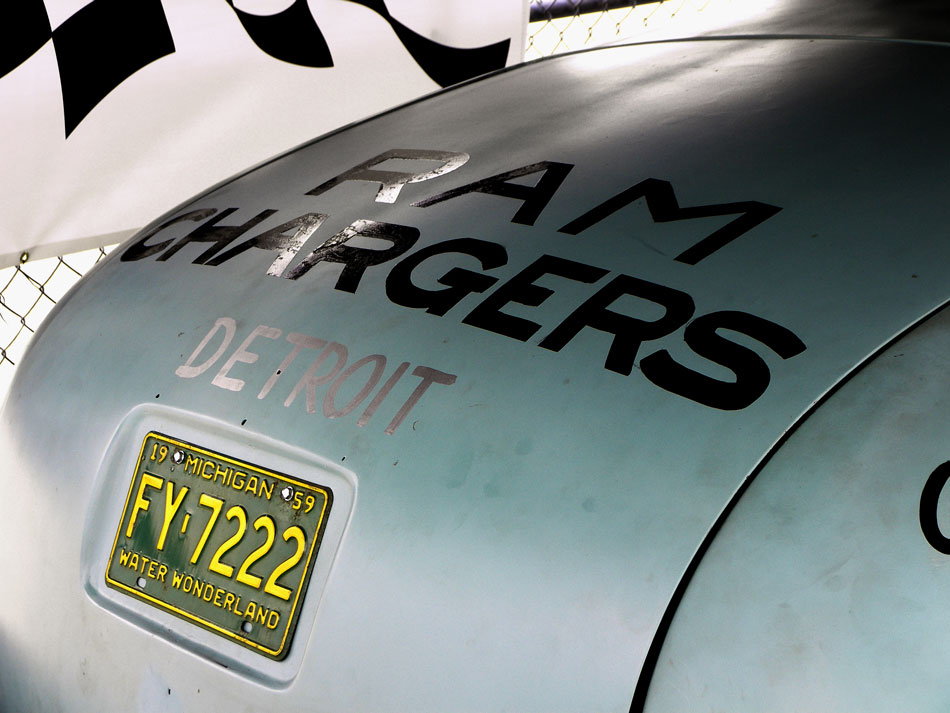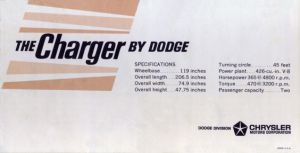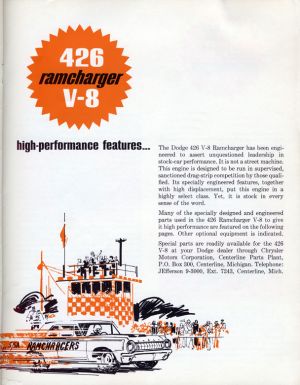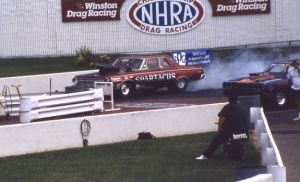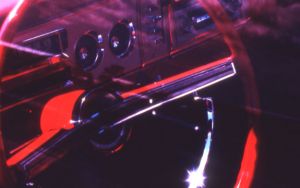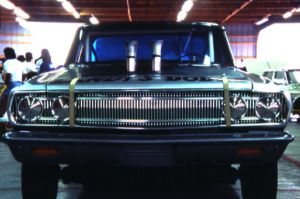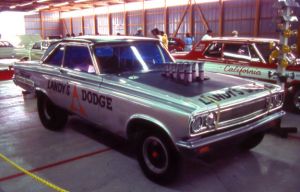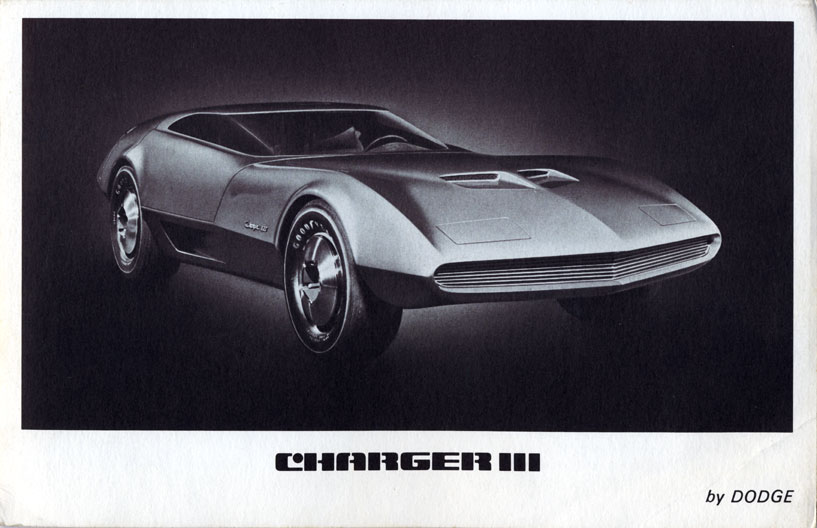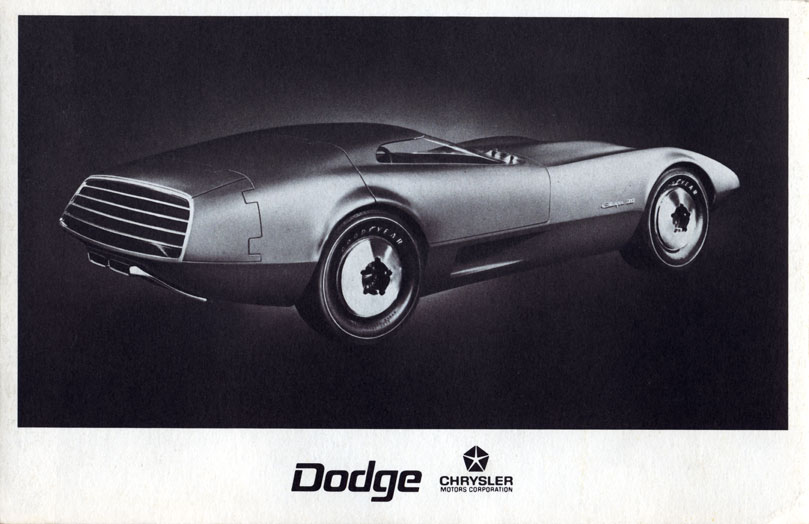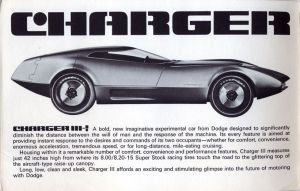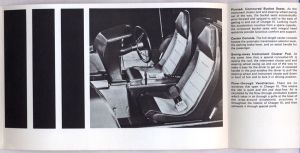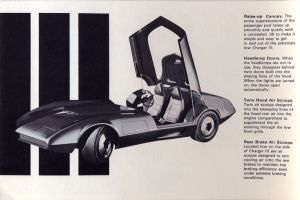Deprecated: Function wpdb::escape is deprecated since version 3.6.0! Use wpdb::prepare() or esc_sql() instead. in /home/fuge7pm8cpiu/public_html/wp-includes/functions.php on line 6078
Deprecated: Function wpdb::escape is deprecated since version 3.6.0! Use wpdb::prepare() or esc_sql() instead. in /home/fuge7pm8cpiu/public_html/wp-includes/functions.php on line 6078
Deprecated: Function wpdb::escape is deprecated since version 3.6.0! Use wpdb::prepare() or esc_sql() instead. in /home/fuge7pm8cpiu/public_html/wp-includes/functions.php on line 6078
.
.
.
.
.
The Story of the Ramchargers
During the 1960s drag racing produced dozens of racing stars; Don “The Snake” Prudehome, “Big Daddy” Don Garlitz, and the Socks and Martin team. But one name had more innovations, more technology, and more fan enthusiasm, than any other. That name belongs to a group of guys who had the same passion: making Mopars go as fast as possible and beat anyone on the racetrack. They called themselves the Ramchargers. The Ramchargers were drag racing’s first dream team. All of them were young men in their 20s, and practically all of them were Chrysler engineers. From 8 to 5 Monday through Friday they helped Chrysler Corporation produce some of the muscle cars era’s most powerful hardware. But on the weekends they took this SuperStock hardware to the racetrack and blew everyone away. Starting in 1958 and racing through 1967, the Ramchargers did more than any one else to create Chrysler Corporation’s high-performance image. They also shared their speed secrets with all of Chrysler’s other racing teams. And in their spare time the group in those candy striped cars became the most successful and popular drag race team the young sport had ever seen. What makes this success all the more amazing is the fact that this group did this on their own.
Despite what many people thought, the Ramchargers wasn’t a high dollar Chrysler sponsored racing team; they started out as a car club. Quoting engine builder Dan Mancini; “We had a group of 10 or 12 guys who were really devoted, then we had other members of the Ramchargers that came and went. Most of them were engineers, we got together a couple times a month, meeting after work”. Jim Thorton shared the driving with other members like Herm Mosser, and Mike Buckle who eventually became the club president. When Mike joined up the Ramchargers were already becoming famous. “I had read about the Ramchargers in the hot rod magazines before I went to work at Chrysler in February 1960. In the engine lab, there were two people in that group that were Ramchargers. So at that point I felt that I had died and gone to heaven that they invited me to one of the meetings, and then later to join this elite club.” Gary Congdon was a fuel system specialist from Holly (the carburetor manufacturer) on loan to Chrysler Corporation; a little networking brought him into the club. Tom Coddington, another Ramcharger engineer stated, “Chrysler was a very unique organization at that time, while it was a big company you still got to know everybody. Everyone was approachable in engineering and everybody was helpful. It was a great place for young engineer to start out.” A funny looking 1949 Plymouth was their first track car, built a few months after their first meeting, it was called The High and Mighty. Tom Coddington also added “It was quite an exotic car, we did some very successful things on the track with its suspension. It was a low-budget car with parts from members’ personal collections. It had a jacked up suspension, an outlandishly tall intake manifold that was the first Tunnel Ram, and wild looking trumpet-like exhaust headers. The plan was to get the center of gravity up as high as possible; to get the weight transfer to the rear tires hence more traction. A tuned link intake manifold was added to get more power using those long Ramair resonator tubes.”
The very first race at a NHRA event they placed first, set the speed record for that class, and then held onto it for the next three years! This got the attention of Chrysler execs, and in 1961 they finally got financial help to run their first Factory Racecar, a 1961 Dodge Polara with a Ramcharger Max Wedge engine. The Dodge Division was now hard at work presenting a more racy image, and now thanks to the Ramchargers they had the hardware to back it up. Finally here was a Mopar that could go toe-to-toe with the 409 Chevy and the Super Duty Pontiac. The 1962 Max Wedge cars were all business with 3,200 pounds of pure muscle with the 424 cubic inch engine that could go from zero to hang-on in a heartbeat! It had a 13.5 to 1 cylinder compression ratio, two Carter four-barrel carburetors, aluminum Cross–Ram intake manifold, and a low restriction exhaust manifolds. This machine was built for speed. In a long overdue tribute to their home team, and maybe an attempt to share some of the glory, Dodge named these engines, the Ramcharger series. But even though this team is mostly responsible for Chrysler’s sales success and racy attitude, they were still going racing on their own time, and on their own dime! Dan Mancinni; “Any of the work done on the Ramcharger cars as was done after work hours. The factory kind of looked down on drag racing, they put it in the same category as motorcycles” he laughed. But even if some of the suits at Chrysler weren’t impressed, the Ramchargers kept on winning and they were about to start on their most successful season yet.
The 1963 racing season came blasting in on a wave of excitement, thanks to all the side-by-side racing in the previous year. The Stock Car classes were now the fan favorites. Looking at the staging lanes then, it was plain to see that the Mopar’s were in total control of the Stock and Superstock classes, but now those hot Max Wedge cars were available to everyone out there with the right timing and car dealership! For 1963 Dodge dialed it up a few more notches. Max Wedge cars were still lighter than the competition, but the hardware was even more brawny; the Sure Grip rear end, heavy-duty Torqueflight transmission and more cubic inches under the hood. This year Dodge Ramchargers engine was punched out to 426 inches with larger intake and exhaust ports and a solid lifter camshaft. Even Plymouth, that had no interest in drag racing just two years earlier, was getting with the program now. Putting their version of the Max Wedge engine in every model from the no luxury Savoy, to the upscale Sport Fury. Plymouth even called their 426 engines the SuperStock series. They were available with either a one four-barrel carburetor with 385 hp, a two four-barrel carb with 11 to 1 compression and 415 hp. Or, of course, the amazing racing version two four barrel carb with 13.5 to 1 compression and 425 hp (listed, that is, but in actuality higher). Wannabe instant track racers could even order aluminum hoods, fenders, bumpers, and doors, to save pounds on these already slim cars. These lightweight Max Wedge Mopars were the closest thing to over-the-counter racecars that anyone had ever seen. Dan Mancini; “You could drive these cars to the drag strip, remove the caps on the exhaust system to add another 90 hp, and you could race any of the Fords, Chevys, Pontiacs, and usually beat them. And if you were running the automatic transmission you would surely beat them, because the tire rubbers traction was so bad at that time. So it was a car built ready to race.”
From day one, the ‘63 Max Wedge cars rolled up the competition at every drag strip across the country. And now, thanks to the availability of all this good speed stuff, there were dozens of Dodge and Plymouth race teams armed with the parts the Ramchargers helped develop. And everybody was aiming to try and beat those red and white striped cars. As the competition heated up, the team members started to feel the effects of working a full-time job and running what was becoming a full-time racing operation. Sometimes there just weren’t enough hours in a day. The hard work, long hours, and the engineering expertise paid off nicely for the Ramchargers in ’63. The team won the Top Stock Eliminator at both the Winter Nationals and the US Nationals that year, then finished one and two at Indianapolis and also set a new class record! Not bad for a bunch of full-time engineers and part-time racers. Sailing into 1964, the Ramchargers could be sure of three things: they would be going faster; the Dodge Golden Anniversary Models would have a redesigned macho look being cooler and more youth oriented; and …there would be even tougher competition, on the NHRA tracks and of course the NASCAR tracks that the “500” models were named after. These were races where “500” would actually mean that the race was five hundred miles long, and there were actual “600” mile races as well. ‘64 is also the year that NASCAR made one of their infamous moves against Chrysler Corporation. They announced new rules that would be in place for ’65, including ordering the Dodge and Plymouth boys to take their precious Race Hemi and get out of Dodge! Thus outlawing the Chrysler Race Hemi engines and Richard Petty’s Belvedere model. In response to this new ruling, Petty, and most of the other Chrysler Factory Team cars withdrew from the ’65 Nascar Grand National Tour in protest.
There’s more to come, enjoy!
– HKK Productions
.
.
.
.
.
More of My Images of the Ramchargers to come, check back soon!
.
.
.
.
Images of The Ramchargers
Copyrighted 2014 by HKK Productions Inc
.
“The NEW 426 V-8 ramcharger” booklet copyright 1964 by the Dodge Division Chrysler Motors Corp
.
Image of 1964 Dodge Charger plus copy from “The Dodge Story” by Thomas A McPherson copyright 1972 published by Crestline Publishing Co
.
Images of the 1968 Charger III by Dodge booklet copyrighted by The Chrysler Motors Corporation
.

